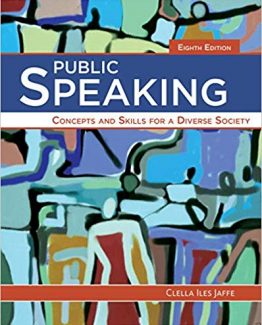The Roots of Evil: The Origins of Genocide and Other Group Violence by Ervin Staub, ISBN-13: 978-0521354073
[PDF eBook eTextbook]
- Publisher: Cambridge University Press; First Edition (October 27, 1989)
- Language: English
- 352 pages
- ISBN-10: 0521354072
- ISBN-13: 978-0521354073
How can human beings kill or brutalize multitudes of other human beings? Focusing particularly on genocide, but also on other forms of mass killing, torture, and war, Ervin Staub explores the psychological, cultural, and societal roots of group aggression. He sketches a conceptual framework for the many influences on one group’s desire to harm another: cultural and social patterns predisposing to violence, historical circumstances resulting in persistent life problems, and needs and modes of adaptation arising from the interaction of these influences. Such notions as cultural stereotyping and devaluation, societal self-concept, moral exclusion, the need for connection, authority orientation, personal and group goals, “better world” ideologies, justification, and moral equilibrium find a place in his analysis, and he addresses the relevant evidence from the behavioral sciences. Within this conceptual framework, Staub then considers the behavior of perpetrators and bystanders in four historical situations: the Holocaust (his primary example), the genocide of Armenians in Turkey, the “autogenocide” in Cambodia, and the “disappearances” in Argentina. Throughout, he is concerned with the roots of caring and the psychology of heroic helpers. In his concluding chapters, he reflects on the socialization of children at home and in schools, and on the societal practices and processes that facilitate the development of caring persons, and of care and cooperation among groups. A wide audience will find The Roots of Evil thought-provoking reading.
Table of Contents:
Cover
Title Page
Copyright Page
Contents
Preface
Acknowledgments
Part I Psychological and cultural bases of genocide and other forms of group violence
1 An introduction
The approach and content of the book
A brief preview
• Differences and similarities and the selection of cases
The definitions of genocide and mass killing
Four mass killings/genocides
The Holocaust
• The genocide of the Armenians
• The autogenocide (Khmer killing Khmer) in Cambodia
• Is mass killing ever justified?
2 The origins of genocide and mass killing: core concepts
A conception of the origins of genocide and mass killing
Difficult life conditions
• Psychological consequences: needs and goals
• Ways of coping and fulfilling needs and goals
• The continuum of destruction
• Cultural-societal characteristics
• The role of bystanders
• The role of motivation
Leadership and followership
The individual and the system
The roots of evil
Groups as evil or good
Comparison of personal (and social) goal theory and other approaches
Compartmentalization of functions and euphemistic language
• Obedience to authority and the authoritarianism of culture
• Psychosocial consequences of World War I on German youth
• Anti-Semitism in Germany
• The role of the family
• Hitler’s personality and psychopathology
• The role of victims
• Complex analyses of the origins of the Holocaust
• Some further comparisons
Summary: a conception of motivation and evolution
3 The psychology of hard times: the effects of difficult life conditions
Motivations arising from threat, frustration, or difficult life conditions
Motivational sources of human behavior
• Motivations for aggression: psychological states and processes that promote aggression
• Difficult life conditions and aggression
The effect of stress and danger on psychological experience
The long-term effects of combat experience
Strategies for coping and goal satisfaction
4 Cultural and individual characteristics
The influence of culture
Aggressiveness as a persistent behavioral mode
• Cultural self-concept, self-esteem, and world view
• Cultural goals and values
• Moral value orientations
• Ingroup-outgroup differentiation and devaluation of outgroups
• Pluralistic and monolithic cultures
• Orientation to authority
• Unconscious motivation – individual and cultural
The influence of sociopolitical organization
Governmental system
• Social institutions
5 The psychology of perpetrators: individuals and groups
Roles and other social processes as origins of harm-doing
Self-selection and the personality of perpetrators
The potentially antisocial person
• Family origins of the potentially antisocial personality
• Authority orientation and its sources in the family
The origins of destructiveness in personality and in the situation
The fanatic as perpetrator
Behavior in groups
The subcultures of perpetrators
• Psychological functioning and individual responsibility
6 Steps along a continuum of destruction: perpetrators and bystanders
Just-world thinking
Learning by doing and the evolution of extreme destructiveness
Compartmentalization and integration
Other origins of mistreatment
The role and power of bystanders
Part II The Nazi Holocaust
7 Hitler comes to power
Genocide and “insanity”
Life conditions: loss of war, the Treaty of Versailles, and economic and political chaos
The guiding motive for the Holocaust: ideology
Reasons for Hitler’s appeal: a summary
8 Preconditions for the Holocaust in German culture
The devaluation of Jews
Self-concept, self-esteem, and national goals
The Germans as a superior people
Respect for and obedience to authority
The influence of Nietzsche
Rationality versus sentimental romanticism
The psychological effects on German youth of World War I and the postwar period
Youth groups and military groups after World War I
9 Nazi rule and steps along the continuum of destruction
Increasing mistreatment of Jews
The evolution of ideas, actions, and the system: euthanasia and genocide
The power of giving onself over to a group, an ideal, or a leader
The role of the totalitarian system
10 The SS and the psychology of perpetrators
The creation, evolution, and role of the SS
Characteristics of SS members
Learning by participation
The interweaving and merging of role and person
The extermination camps: Auschwitz
The psychology of perpetrators: individuals and the system
The characteristics and functioning of perpetrators
• Behavioral shifts
Moral equilibration, choice, and responsibility
Individual responsibility
The completion tendency: killing till the very end
11 The behavior and psychology of bystanders and victims
The role of bystanders
The passivity of German bystanders
• Bystanders and perpetrators in Nazi Europe
• The passivity of the outside world
Jewish cooperation, resistance, and psychological experience
The Jewish councils
• Jewish actions
• The psychology of victims
The power of heroic bystanders
Heroic rescuers
Part III Other genocides and mass killings
12 The Turkish genocide of the Armenians
Historical (life) conditions
Cultural preconditions
The devaluation of minorities and Christians
• Orientation to authority
Steps along the continuum of destruction
Devaluation and increasing mistreatment
Armenian “provocation”
The evolution of Young Turk ideology
The machinery of destruction
The genocide
The role of bystanders
13 Cambodia: genocide to create a better world
Historical (life) conditions
Cambodian peasants: economic conditions, uprising, reprisals
• Political instability and violence
The Khmer Rouge rule and “autogenocide”
Ideological bias and reports and views of atrocities
Ideology, world view, and the aims of the Khmer Rouge
Cultural preconditions: the roots of ideology and genocide
Class divisions, urban-rural rift, and slavery
• Orientation to authority
• The ideology of antagonism toward Vietnam
• Cultural self-concept
• A tradition of violence in Cambodia
Experiential and intellectual sources of ideology and fanaticism
Gaining followers: the tools of revolution and genocide
The role of specific individuals
Steps along the continuum of destruction
The role of bystanders
14 This disappearances: mass killing in Argentina
Historical (life) conditions
Economic difficulties
• Political conflict and violence
Cultural preconditions
The role of the military in public life
• The self-concept and ideology of the military
Steps along the continuum of destruction
Changing institutions
• The machinery of destruction
The mass killings
The selection of victims: ideology, self-interest, caprice
The psychology of direct perpetrators
The role of bystanders
Internal bystanders
• Mothers of the Plaza del Mayo
• External bystanders
15 Summary and conclusions: the societal and psychological origins of genocide and other atrocities
A comparison of the four instances
Difficult life conditions
• Cultural preconditions
Leaders and followers
The psychology and motives of perpetrators
The psychological processes of groups
Steps along the continuum of destruction
The obligation of bystanders
More and less central origins of genocide
Predicting genocide and mass killing
The psychology of torture and torturers
Part IV Further extensions: the roots of war and the creation of caring and nonaggressive persons and societies
16 The cultural and psychological origins of war
Motivations for war
Cultural preconditions for war
The ideology of antagonism
• Societal self-concept and national goals
• Nationalism, belonging, and the self-concept
• National security and related ideologies
• World views that contribute to war
• Pluralistic versus monolithic societies
• Leadership
The national interest
Minimalism in the relations of nations
Toward positive reciprocity
17 The nature of groups: security, power, justice, and positive connection
Assumptions about human nature and the nature of societies
An alternative view of individual and group potentials
Relations between the individual and the group
Important societal issues
Social justice and life problems
• Creating a society of enablement
• Individualism and community
• The accountability of leaders
• Freedom, pluralism, and self-censorship
18 The creation and evolution of caring, connection, and nonaggression
Changing cultures and the relations between societies
Crosscutting relations and superordinate goals
• Learning by doing and steps along a continuum of benevolence
• Creating positive connections between groups
Positive socialization: parenting, the family, and schools
Avenues for change
Language and ideas
• Writers, artists, the media, leaders, all citizens
Notes
Index
What makes us different?
• Instant Download
• Always Competitive Pricing
• 100% Privacy
• FREE Sample Available
• 24-7 LIVE Customer Support






Reviews
There are no reviews yet.